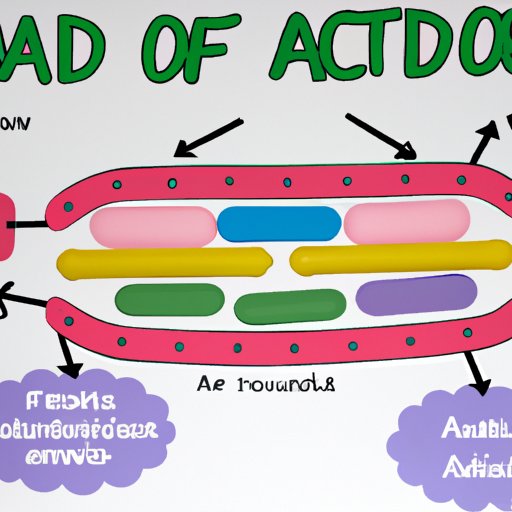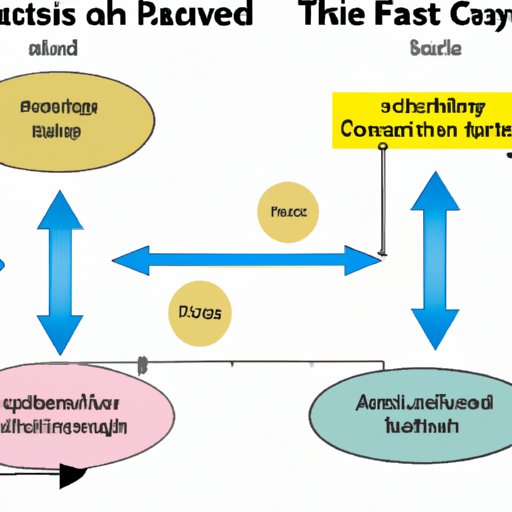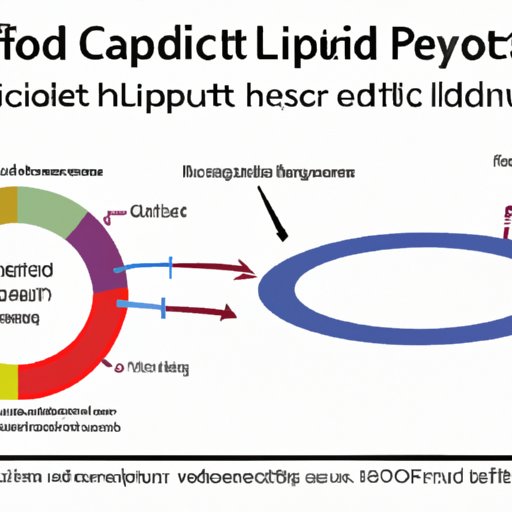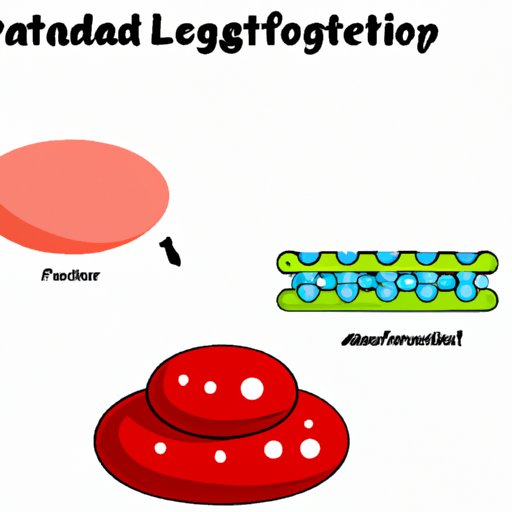Introduction
Fatty acids are molecules composed of long chains of carbon atoms that are found in both plants and animals. They are essential components of cell membranes, as well as being a major source of energy for cells. In order for fatty acids to enter a cell and fulfill their functions, they must first cross the cell membrane. The cell membrane is a semi-permeable barrier that surrounds the cell and helps to regulate the movement of substances into and out of the cell.

Explaining How Fatty Acids Are Transported Across the Cell Membrane
The process of transporting fatty acids across the cell membrane involves two main mechanisms: active transport and passive transport. Active transport requires the use of energy and is used to move substances against their concentration gradient. In contrast, passive transport does not require energy and works by allowing substances to diffuse down their concentration gradient. Both active and passive transport can be used to transport fatty acids across the cell membrane.
In addition to these two mechanisms, proteins also play an important role in facilitating the movement of fatty acids across the cell membrane. Proteins embedded in the cell membrane act as channels or carriers, allowing fatty acids to pass through the membrane. These proteins can bind to specific types of fatty acids, allowing them to be transported into or out of the cell.
Examining the Effects of Different Fatty Acids on Cell Membranes
The structure of a fatty acid can have a significant impact on its ability to cross the cell membrane. Fatty acids can be classified as either hydrophilic (water-soluble) or hydrophobic (water-insoluble). Hydrophilic fatty acids tend to dissolve easily in water, while hydrophobic fatty acids do not. As a result, hydrophilic fatty acids are more likely to be able to cross the cell membrane than hydrophobic fatty acids.
The size of the fatty acid chain can also affect its ability to cross the cell membrane. Smaller fatty acids are more likely to be able to pass through the cell membrane, while larger fatty acids may be too large to fit through the channels in the cell membrane.
Discussing the Importance of Fatty Acid Transport in Cells
Transporting fatty acids across the cell membrane is essential for various cellular processes. Fatty acids are involved in signaling pathways, energy production, and membrane structure maintenance. In addition, fatty acids can also be used as a source of energy for cells. As a result, it is important for cells to be able to maintain the proper levels of fatty acids inside and outside of the cell.
In order to ensure that fatty acid levels remain within a certain range, the cell must be able to regulate the amount of fatty acids entering and leaving the cell. This is accomplished by controlling the rate of fatty acid transport across the cell membrane.

Comparing and Contrasting Passive and Active Transport of Fatty Acids
One of the key differences between active and passive transport of fatty acids is the direction of the transport. Active transport involves moving substances against their concentration gradient, while passive transport involves moving substances down their concentration gradient. This means that active transport is typically used to move fatty acids into the cell, while passive transport is used to move fatty acids out of the cell.
Another difference between active and passive transport of fatty acids is the type of proteins involved in the process. Active transport requires the use of proteins known as pumps, which actively move substances across the cell membrane. In contrast, passive transport does not require the use of proteins, instead relying on the diffusion of substances down their concentration gradient.

Analyzing the Role of Lipids in Facilitating Fatty Acid Transport
Lipids are molecules that are found in cell membranes and play an important role in maintaining the integrity of the membrane. Lipids also play an important role in facilitating the transport of fatty acids across the cell membrane. The hydrophobic nature of lipids allows them to form a barrier around the fatty acid molecule, making it easier for the fatty acid to move through the cell membrane.
In addition, lipids can also act as carriers for fatty acids, allowing them to be transported from one side of the cell membrane to the other. This is especially useful for larger fatty acids, which may be too large to fit through the channels in the cell membrane.
Conclusion
Fatty acids are essential molecules that must be transported across the cell membrane in order to function properly. This article has explored how fatty acids travel through a cell membrane, examining the role of proteins, active and passive transport, and lipids. It has been shown that active transport is used to move fatty acids into the cell, while passive transport is used to move fatty acids out of the cell. In addition, lipids play an important role in facilitating the movement of fatty acids across the cell membrane.
(Note: Is this article not meeting your expectations? Do you have knowledge or insights to share? Unlock new opportunities and expand your reach by joining our authors team. Click Registration to join us and share your expertise with our readers.)
